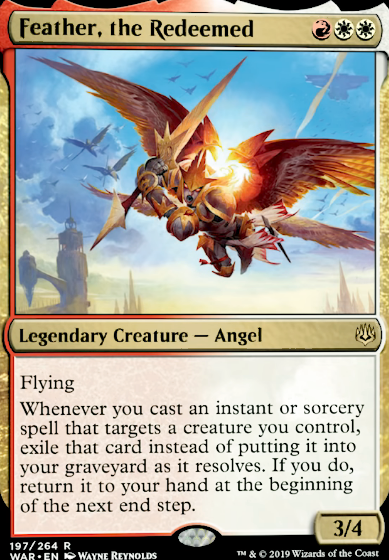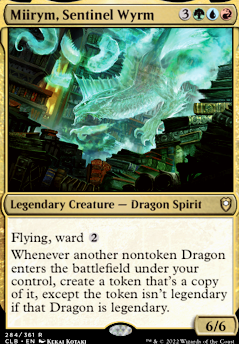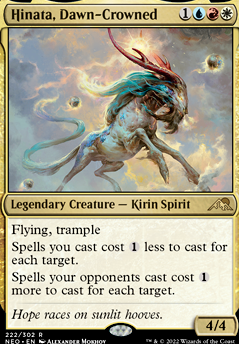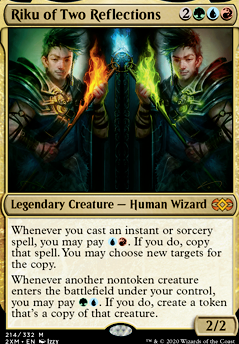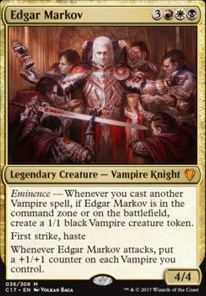Oblation: The owner of target nonland permanent shuffles it into their library, then draws two cards. This piece of removal is powerful as it can target any nonland permanent and see it get shuffled into its owner's library. Granting that player with two cards is not optimal. However, sometimes the removal of a troublesome permanent is worth it. As a bonus, notice the text of the spell: The owner of TARGET nonland permanent shuffles it into their library. Not TARGET nonland permanent an OPPONENT CONTROLS. We can target one of our nonland permanents and draw a couple of cards. REMEMBER: Token creatures are permanents. With Feather, the Redeemed on the battlefield and under our control, she returns Oblation to our hand and we can target additional token creatures and draw two cards each time! Value!
Reckless Rage: This spell can be nasty! Reckless Rage deals four damage to target creature we don't control and two damage to target creature we control. What's Feather, the Redeemed's toughness? It's four. What is the casting cost of this spell? . Each turn, we can deal four damage to one of our opponents' creatures, two damage to Feather, the Redeemed, return Reckless Rage to our hand and do it again next turn. All for each time!??
Return to Dust: With Return to Dust, we exile target artifact or enchantment. If we cast Return to Dust during our main phase, we may exile up to one other target artifact or enchantment. With so much recursion in our format, the potential of exiling a combination of two artifacts and/or enchantments is extremely valuable.
Into the Core: Into the Core doesn't have the versatility of Return to Dust, but it doesn't have any of its restrictions either. For the same converted mana cost as Return to Dust, we exile two target artifacts. This is only helpful if EDH/Commander players have any artifacts under their control. This happens, right?
Declaration in Stone: This is not the greatest removal spell in our format. Declaration in Stone exiles target creature and all other creatures its controller controls with the same name as that creature. That player investigates for each nontoken creature exiled this way. Aside from creature tokens and the occasional Relentless Rats, Shadowborn Apostle, Rat Colony and/or Persistent Petitioners decks we may encounter, we will most likely exile a single creature and gift its controller with a Clue token. Under the best circumstances, we will exile a number of creature tokens with the same name without leaving a Clue. Declaration in Stone is worth inclusion in this deck because its floor of exiling a creature in exchange for a Clue token for is reasonably high. The ceiling of this card is so much higher if we can remove an army of creature tokens for just .
Wear / Tear: This fuse card offers two options for independent mana costs of to destroy an artifact and to destroy an enchantment. We can cost both halves of this card by paying and destroying an artifact and an enchantment. Versatile removal spells are very favorable, and Wear / Tear's inclusion in this deck is warranted because of it.
Chaos Warp: Chaos Warp is another piece of removal that can potentially reward the owner of the removed permanent. It's risky. It's a gamble. Something worse could hit the 'field. Maybe an instant or sorcery card will be revealed. Or a just land. Sometimes the risk is worth the reward. What is your Chaos Warp story?
Swords to Plowshares: Best creature removal spell in Magic: the Gathering. For we exile target creature from the battlefield. Its controller gains life equal to the exiled creature's power, which is less worrisome to us than a troublesome and/or problematic creature.
Path to Exile: If Swords to Plowshares is the best creature removal spell in Magic: the Gathering, then Path to Exile is #1B. For we exile target creature from the battlefield. Its controller gets to search their library for a basic land and put it onto the battlefield tapped, which is less worrisome to us than a troublesome and/or problematic creature. Guess what? Some EDH/Commander players don't even have basic lands in their deck. Mistake! Even in my five-color EDH/Commander decks I always include at least one Plains, Island, Swamp, Mountain and Forest in order to reap the benefits of Path to Exile, Field of Ruin and Veteran Explorer as well as preparing for possible Blood Moon and/or Back to Basics players.
Wrath of God: Wrath of God is another board wipe. We destroy all creatures and they can't be regenerated. This spell is best played right after casting Boros Charm and choosing to grant our permanents indestructible until end of turn. Not for our opponents, of course.
Austere Command: With Austere Command, we're provided four different modes from which to choose, and we can selected two of them. Either we destroy all artifacts, destroy all enchantments, destroy all creatures with converted mana cost four or greater or destroy all creatures with converted mana cost three or less. We can clear the battlefield of creatures or remove a specific grouping of them in addition to clearing out all artifacts or enchantments. This spell's versatility makes it so valuable and worthy of inclusion in this deck.


